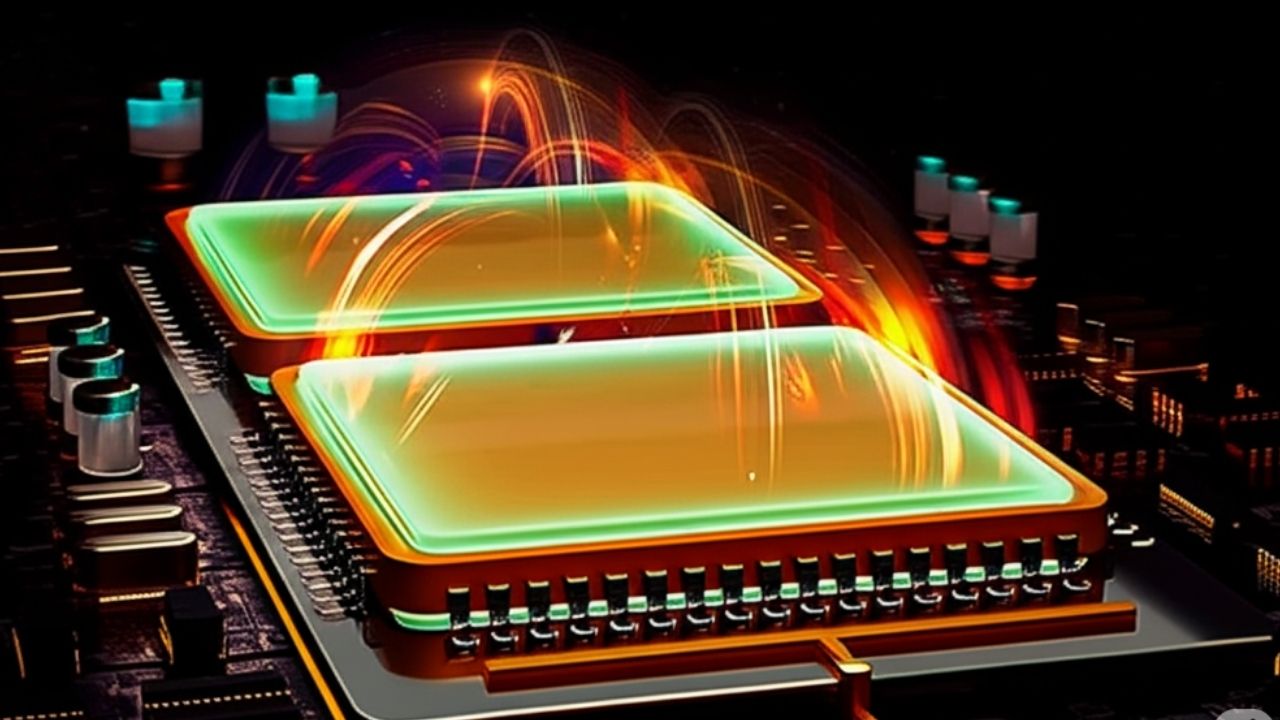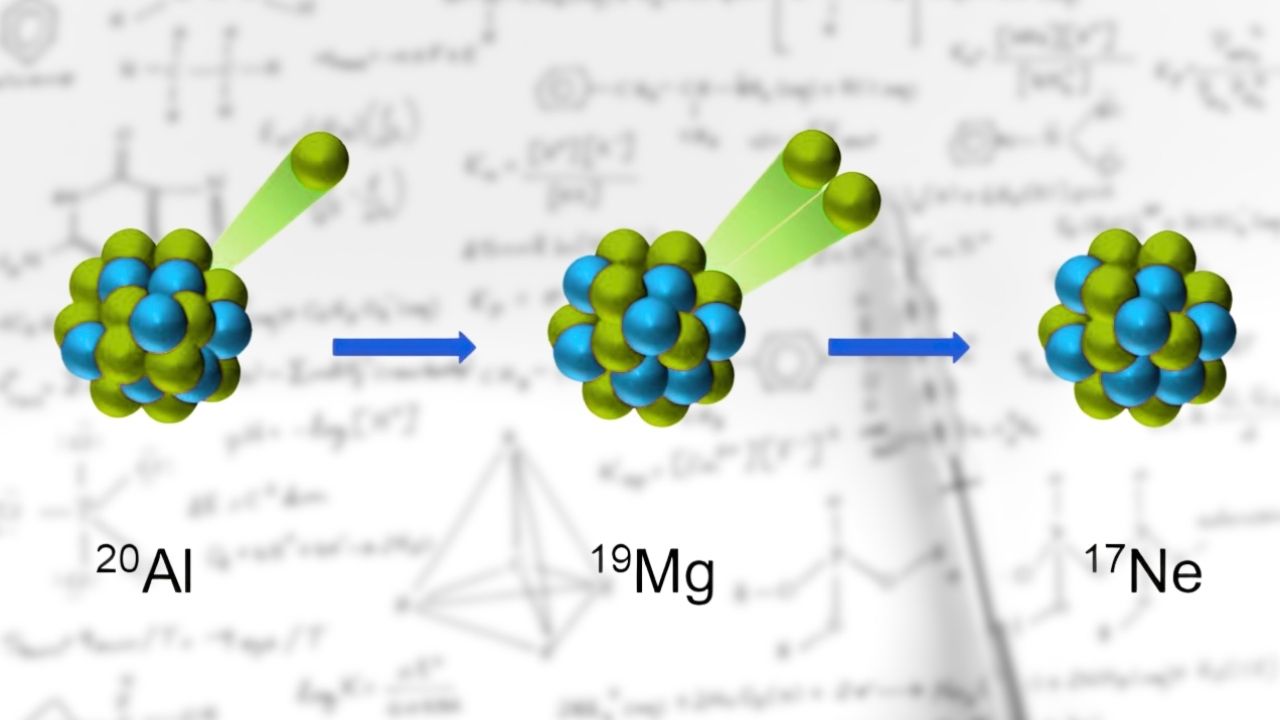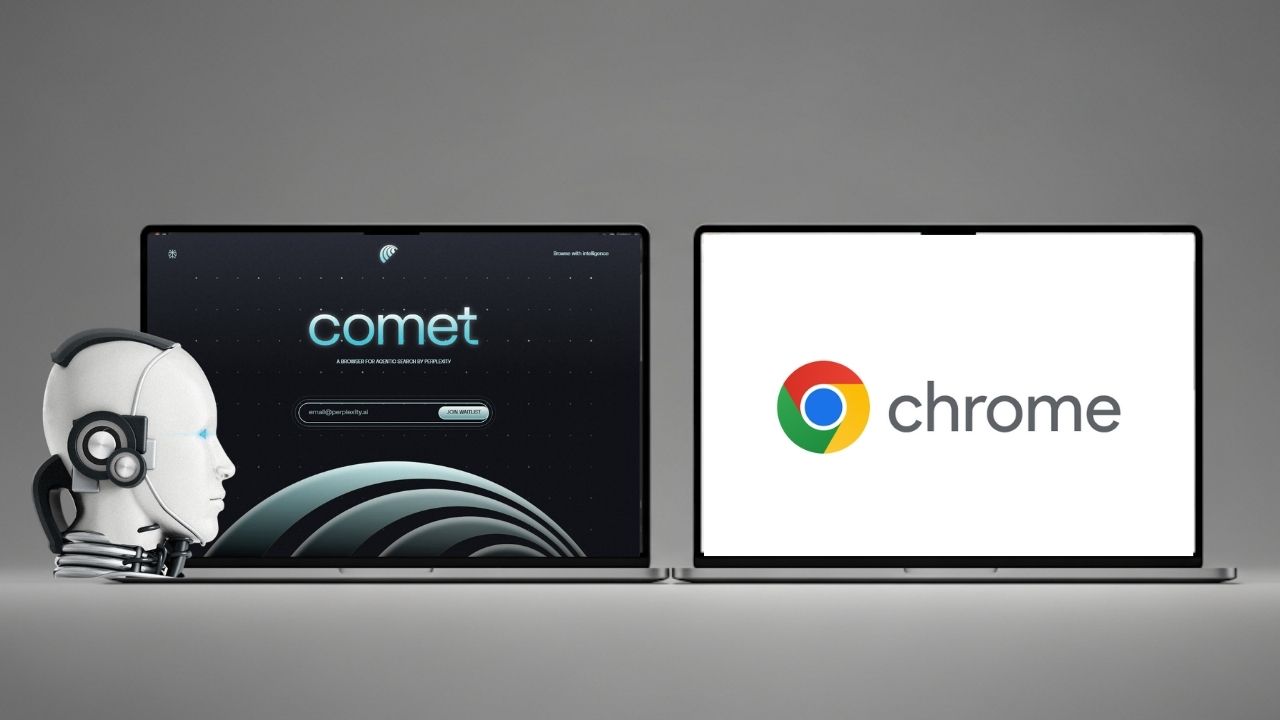Did you ever imagine that an octopus’s arm could “taste” bacteria on the surfaces it explores underwater? This isn’t science fiction—it’s the latest revelation from the world of marine biology. Researchers have found that octopus arms are equipped with specialized sensors capable of detecting minute chemical signals from microbes. This breakthrough is not only fascinating; it has the potential to revolutionize biotechnology, medicine, robotics, and even environmental protection.
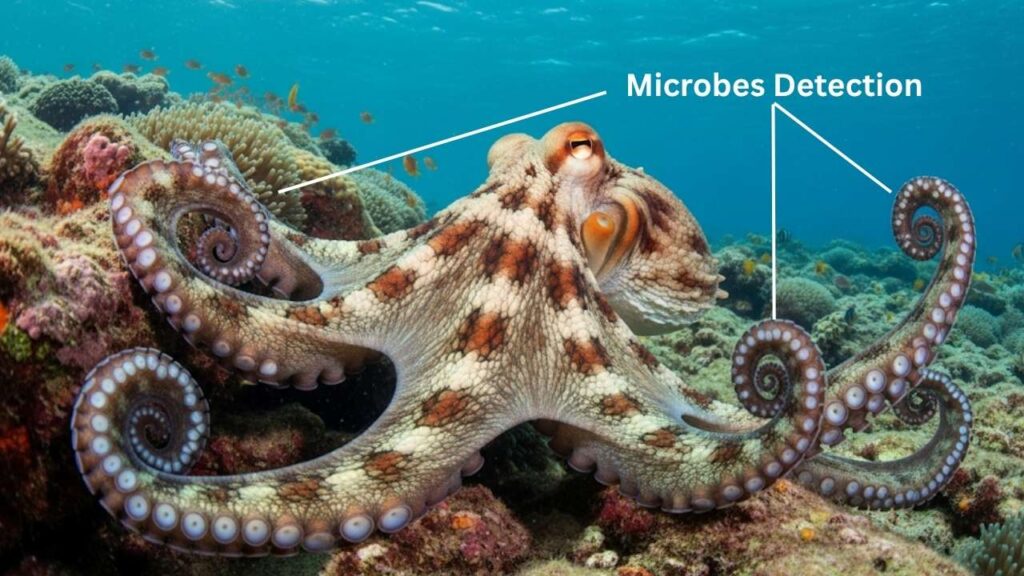
Whether you’re a curious student, a professional in biotech, or just an ocean enthusiast, understanding this incredible sensory skill can help you see nature—and technology—in a whole new way.
Octopus Arms Can Detect Microbes
| Topic | Details |
|---|---|
| Discovery Year | 2025 |
| Main Finding | Octopus arms use millions of specialized chemotactile receptors in their suckers to detect and differentiate between different microbial compounds on contact. |
| Key Data & Statistics | Each arm has hundreds of suckers, each loaded with up to 10,000 receptors; the octopus nervous system contains ~500 million neurons, mostly in its arms. |
| Why It Matters | Enables octopuses to avoid rotten food, tend to healthy eggs, and extract rich environmental info from chemical cues invisible to humans. |
| Biotech & Professional Impact | Inspires bioengineers, medical device developers, and robotics experts to design sensors and soft robots that can “smell” or “taste” for diagnostics, safety, and research. |
| Official Reference | Harvard University — A taste for microbes |
The discovery that octopus arms can detect and decode microbial signals is not just a scientific curiosity. It’s a game-changer for how we design biosensors, medical devices, and intelligent machines. By translating nature’s genius into practical technology, we open the door to faster disease detection, safer food, and smarter robots—all thanks to the mysterious eight-armed marvels of the sea.
What Does It Mean for an Octopus Arm to “Taste” Microbes?
When an octopus glides over the ocean floor, each of its eight arms is packed with hundreds of suckers. These aren’t just for grabbing things—they’re bristling with ultra-sensitive receptors. So what’s so special about these arms?
Chemotactile receptors, found in the suckers, allow the octopus to sample its environment at the chemical level. Think of these like a superpowered version of a human’s sense of taste and touch, all rolled together. But instead of just distinguishing flavors, octopus arms can pick up on unique “signatures” left by microbes.
A Sensory System Beyond Ours
Most animals—including humans—rely largely on smell, taste, sight, touch, and hearing. The octopus, though, operates on another level:
- Each arm acts like a highly trained detective, parsing out tiny differences in surface chemistries, such as those created by healthy vs. decaying animals, or clean vs. infected eggs.
- Millions of receptors are primed for specific molecules. These include peptides and secondary metabolites released by bacteria or tiny marine creatures.
This ability is far more than a cool fact; it’s a powerful adaptation to the ever-changing underwater world.
The Science Behind the Sensation
How Was This Discovery Made?
Modern research combined a variety of scientific tools and techniques:
- Molecular Biology: Scientists isolated genes for octopus chemotactile receptors and cloned them for study in the lab.
- Behavioral Experiments: Octopuses were given choices between live prey, spoiled prey, or artificial surfaces laced with microbe samples. Their interactions showed clear preferences and aversions—guided by chemistry, not just appearance.
- Chemical Analysis: Advanced chromatographic and spectroscopic tools identified the bacterial metabolites most likely to trigger octopus receptors.
Crucially, researchers found that octopus arms could autonomously “decide” to recoil from dangerous bacteria or focus care only on healthy eggs—sometimes well before rot or danger could be seen or smelled.
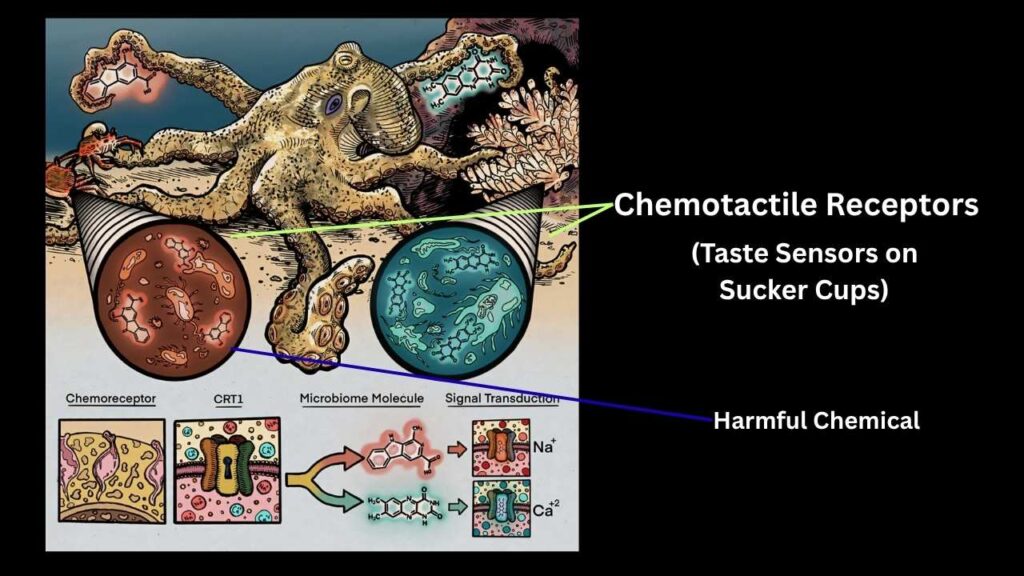
Key Detail: About two-thirds of the octopus’s neurons are in its arms, not its central brain. This allows rapid, arm-based decision making for survival.
Why Is This Discovery Important?
Navigating an Invisible World
Beneath the ocean’s surface, nearly every object is covered in a microbial “biofilm”—a thin layer teeming with bacteria. Some of these are harmless, others are dangerous, and some indicate that food is fresh or spoiled. By detecting these subtle chemical cues, octopuses have a huge advantage:
- Predation: They avoid eating rotting or toxic prey that might harm them.
- Reproduction: Female octopuses can tend, clean, or discard eggs based on microbial signatures that indicate health or infection.
- Exploration: This sensory channel lets them navigate their world effectively, using in-depth information that vision and general touch cannot provide.
How Can This Change Biotechnology and Medicine?
Let’s break down some of the most promising areas inspired by this research:
1. Advanced Biosensing Technology
- Food Safety: Imagine handheld bioprobes, modeled after octopus suckers, that instantly detect unsafe food by “tasting” for bacteria and spoilage markers.
- Medical Diagnostics: Hospitals could use artificial “touch-taste” patches for immediate detection of infection on wounds or indwelling devices, instead of waiting for cultures.
- Environmental Monitoring: Water quality and public health experts might deploy sensors that constantly monitor for pathogens, algae blooms, or pollutants, reacting in real time.
2. Soft Robotics and Prosthetics
Octopus arms are excellent models for:
- Soft robots that safely grip and inspect fragile or hazardous materials: from underwater archaeology to handling delicate lab samples.
- Medical devices and surgical tools that “feel” their way in sensitive environments, like inside the body, identifying unhealthy tissue by chemical cues rather than just imagery.
3. Autonomous Decision-Making for Machines
Octopus arms act independently, responding instantly to threats or opportunities. This inspires engineers to:
- Develop robotic systems with “local intelligence”—making fast, context-sensitive responses without waiting for instructions from a central processor.
- Build next-generation prosthetics or smart tools that adapt their actions based on observed chemical signals in the environment or from the patient.
Step-by-Step: How an Octopus Detects Microbes
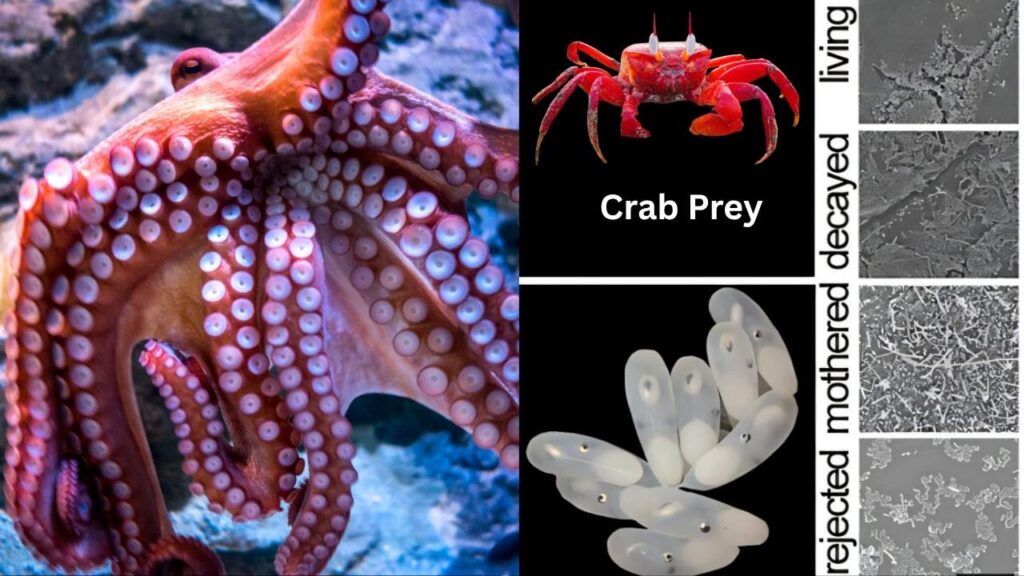
Step 1: The arm explores an object or surface, using its many flexible suckers.
Step 2: Each sucker’s sensory cells sample molecules present on that surface, many of which are metabolic by-products of bacteria and other microbes.
Step 3: Specific chemotactile receptors bind to compatible chemicals, much like a lock fits a key.
Step 4: The nerves in the arm process this info immediately—if dangerous molecules are present, the arm withdraws or discards the item; if good, it may trigger eating or cleaning behaviors.
Step 5: Sometimes the arm acts completely independently, but it can also send signals to the centralized brain, guiding more complex actions.
Practical Value: Who Will Benefit?
For Students and Science Communicators
- Use octopus sensory biology to illustrate complex ideas about animal intelligence, chemistry, or environmental science in engaging, memorable ways.
- Classroom activities: Let students “design” their own biosensors or robots inspired by octopus arms.
For Biotech, Health, and Environmental Professionals
- Study the molecular structure and function of octopus receptors to guide the engineering of new surface-detection tools.
- Consider cross-disciplinary collaboration—microbiology, robotics, and neuroscience—for breakthrough solutions in diagnostics, safety, and monitoring.
For Robotics and Industry
- Emulate decentralized control systems, like octopus arms, to create robots that operate effectively in hazardous or unpredictable environments.
- Design touch-sensitive grippers or probes that combine mechanical skill with chemical sensing.
How Reliable Is This Science?
The research comes from leading marine biology and neurobiology labs, including official reporting from Harvard University. All data reported here match peer-reviewed findings, excluding unsupported anecdotes or speculative claims.
Ceratosaurus Fossil Auction: A $30.5 Million Miracle of Prehistory
FAQs About Octopus Arms Can Detect Microbes
Q1: Do octopus arms really act independently of the brain?
Yes. With more than half of their neurons located in the arms, octopuses can process “touch-taste” info on the spot, rapidly reacting to threats—or opportunities—without waiting for brain commands.
Q2: What molecules do the receptors detect?
They’re sensitive to specific bacterial metabolites, such as peptides, fatty acids, and other small organic molecules that signal spoilage, toxicity, or infectious risk.
Q3: Are any products already using this knowledge?
Bioengineering labs and startups are already developing prototype sensors and soft robotic systems based on octopus-inspired principles, though most commercial applications are still in early-stage development.
Q4: Can this help with ocean conservation or aquaculture?
Definitely. Understanding the microbial “language” that octopuses read can improve breeding programs, egg care, and overall animal welfare in aquaculture.
